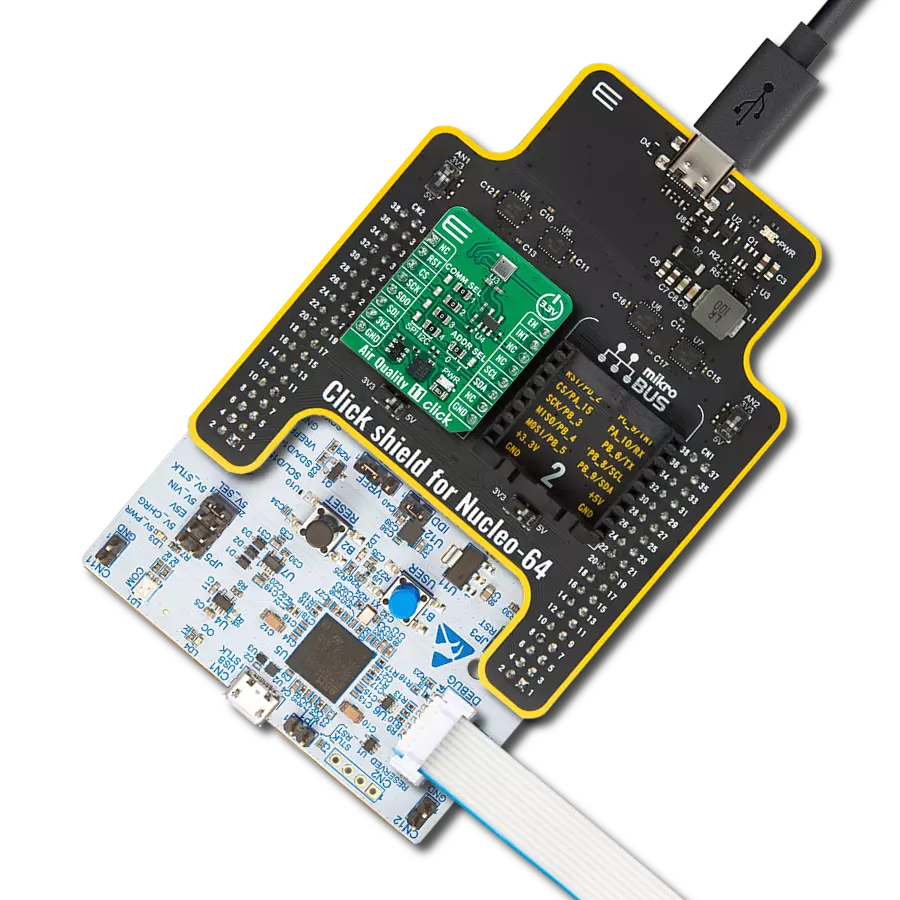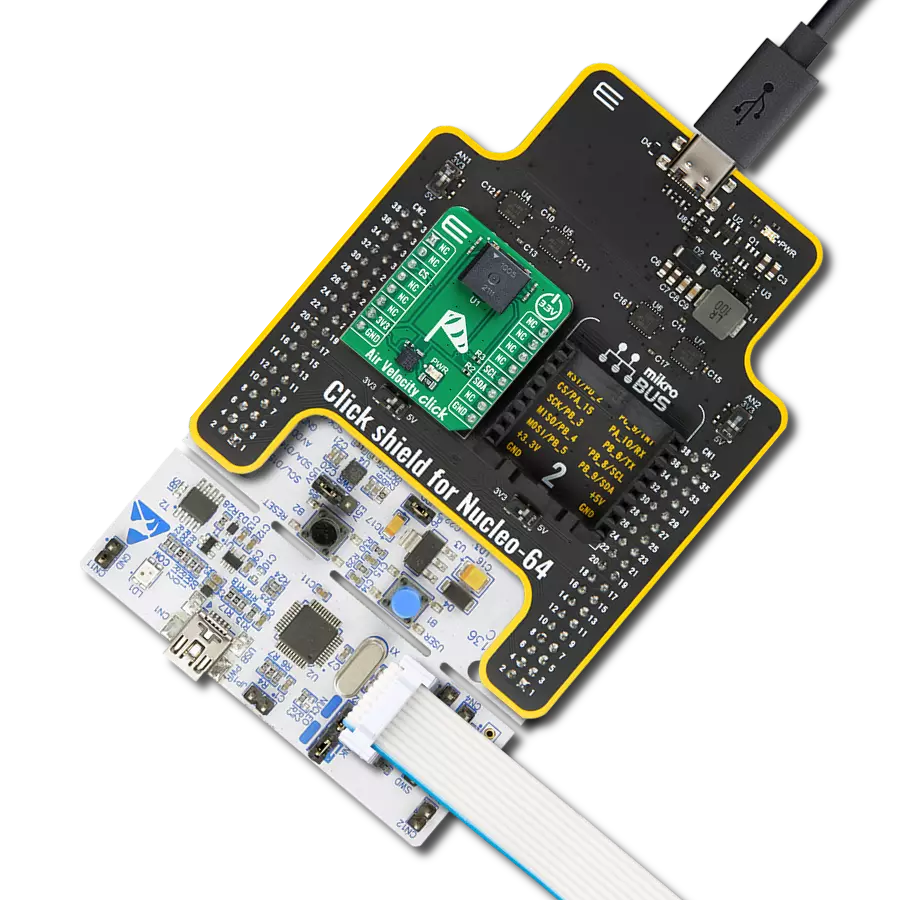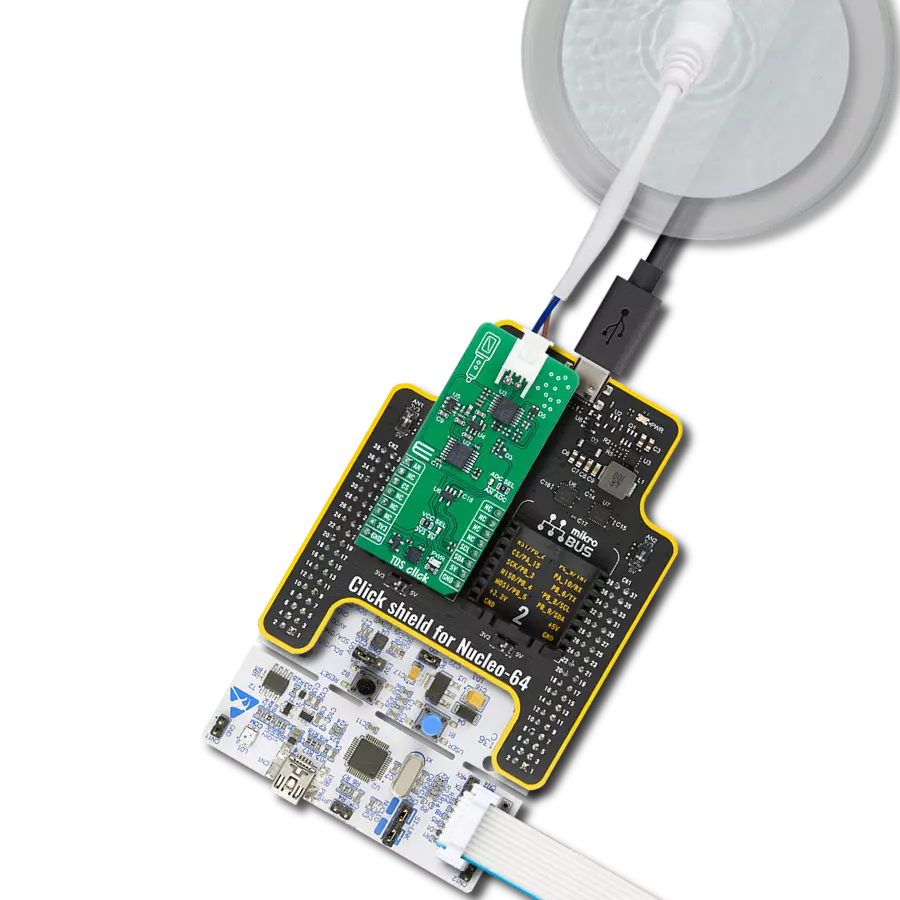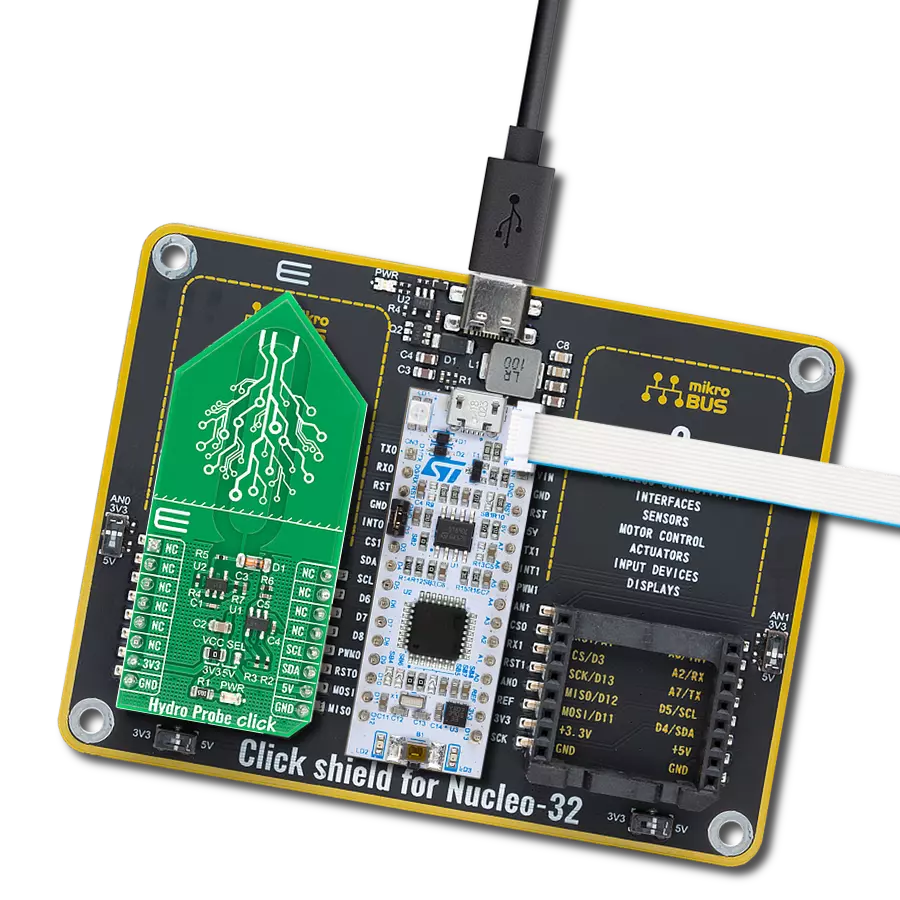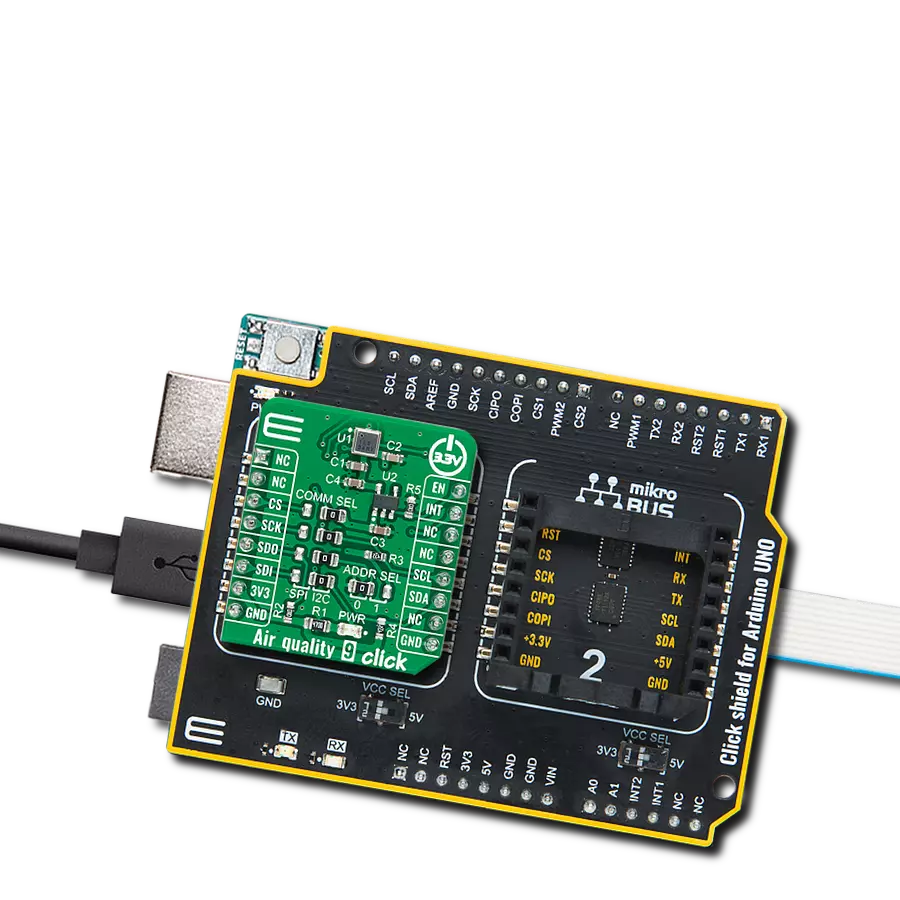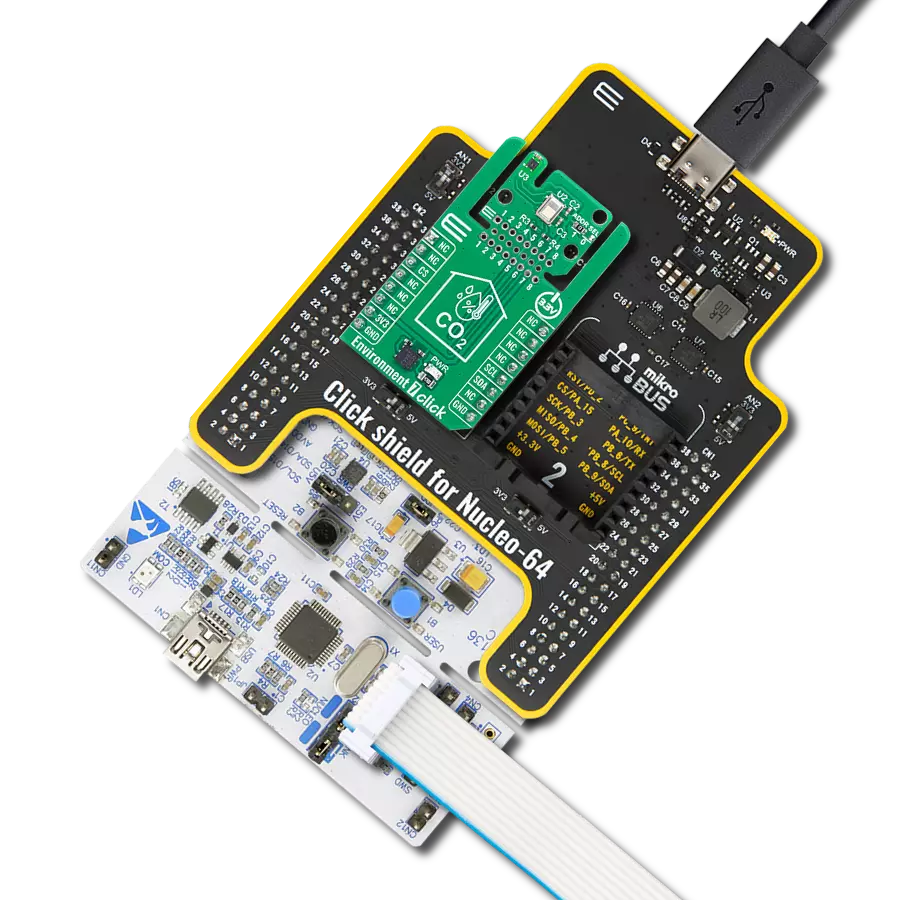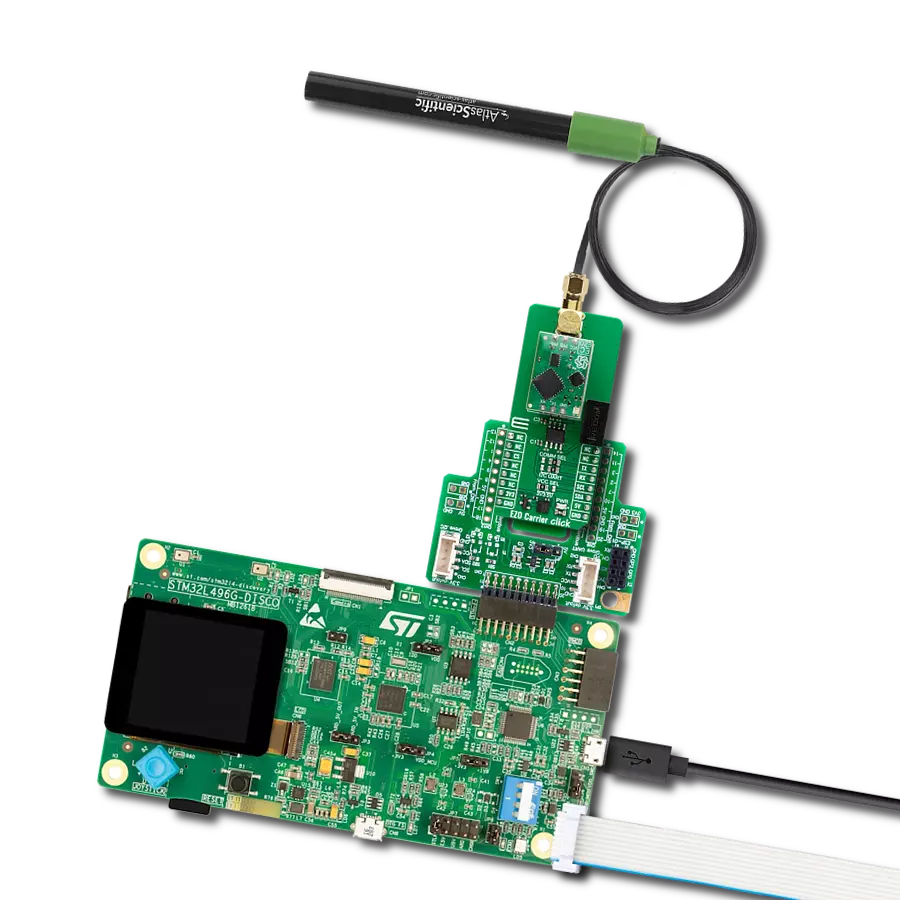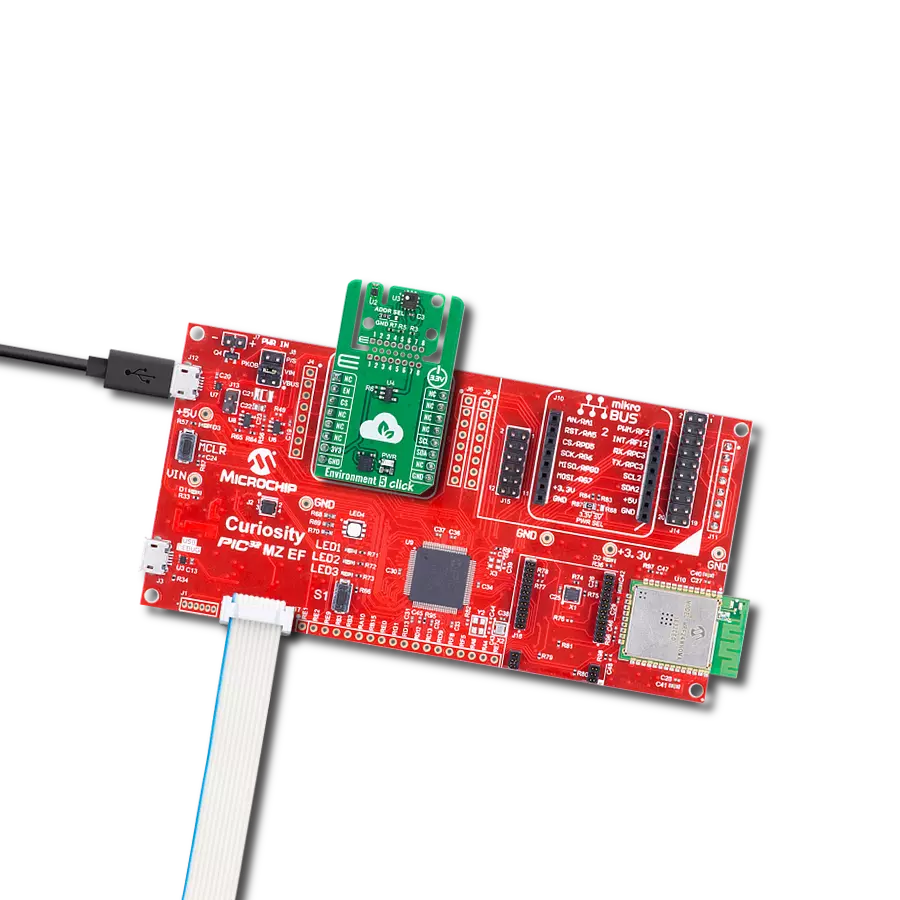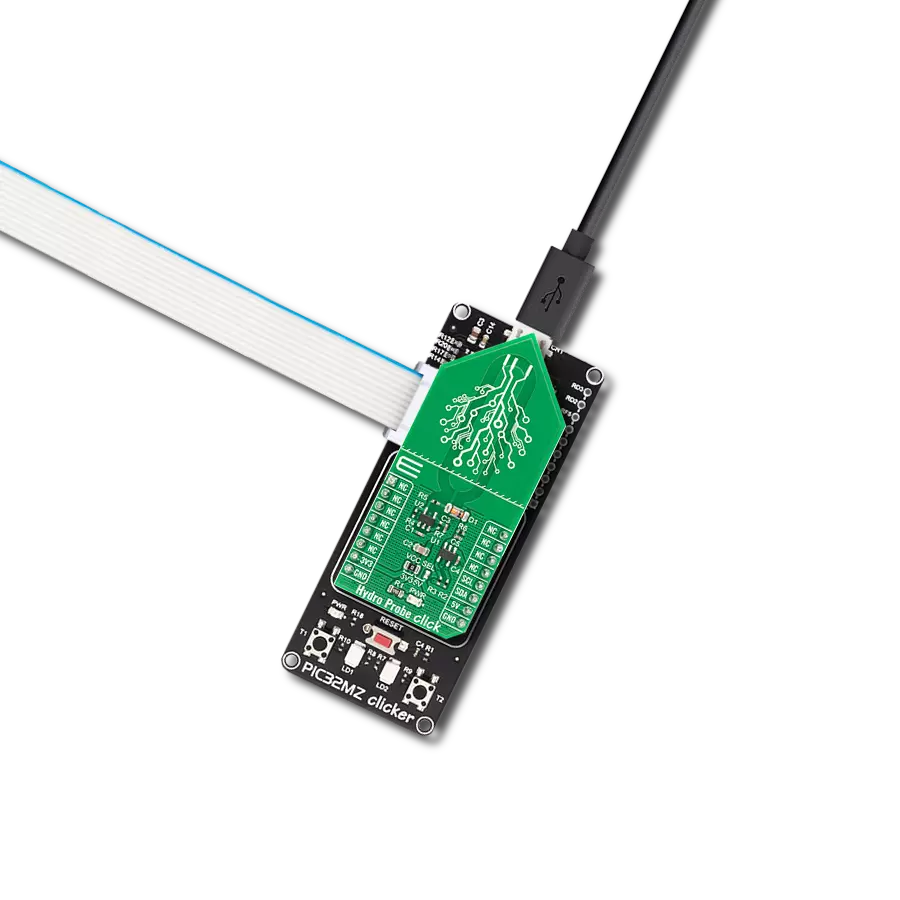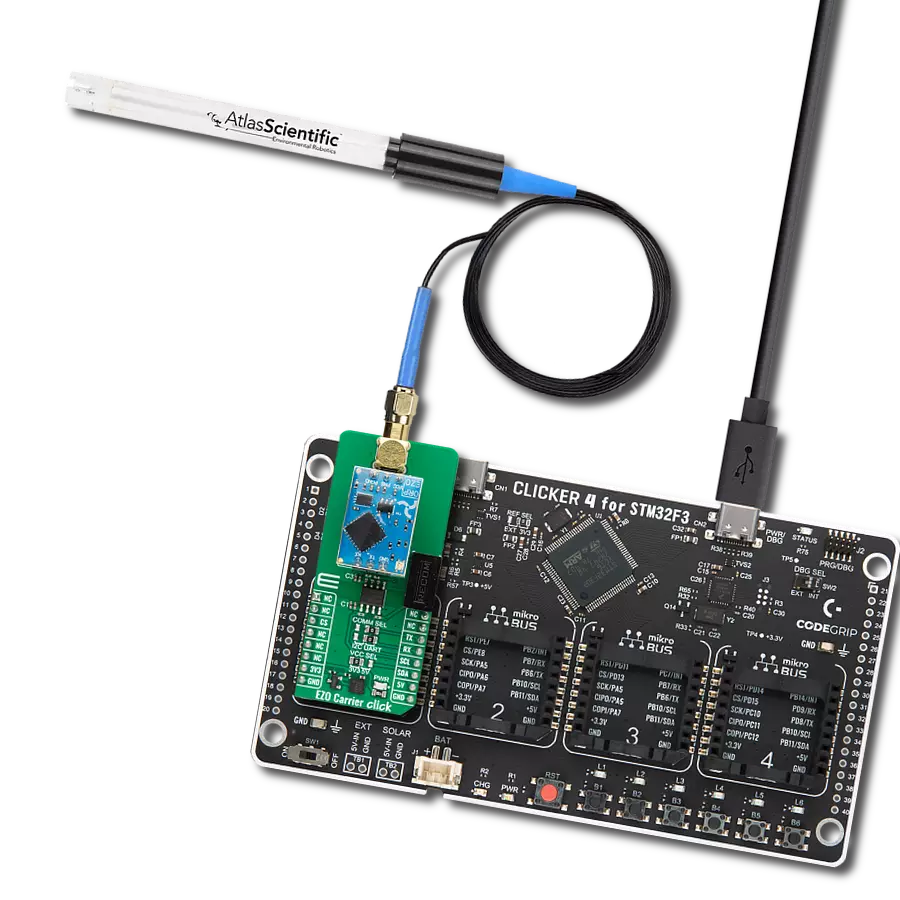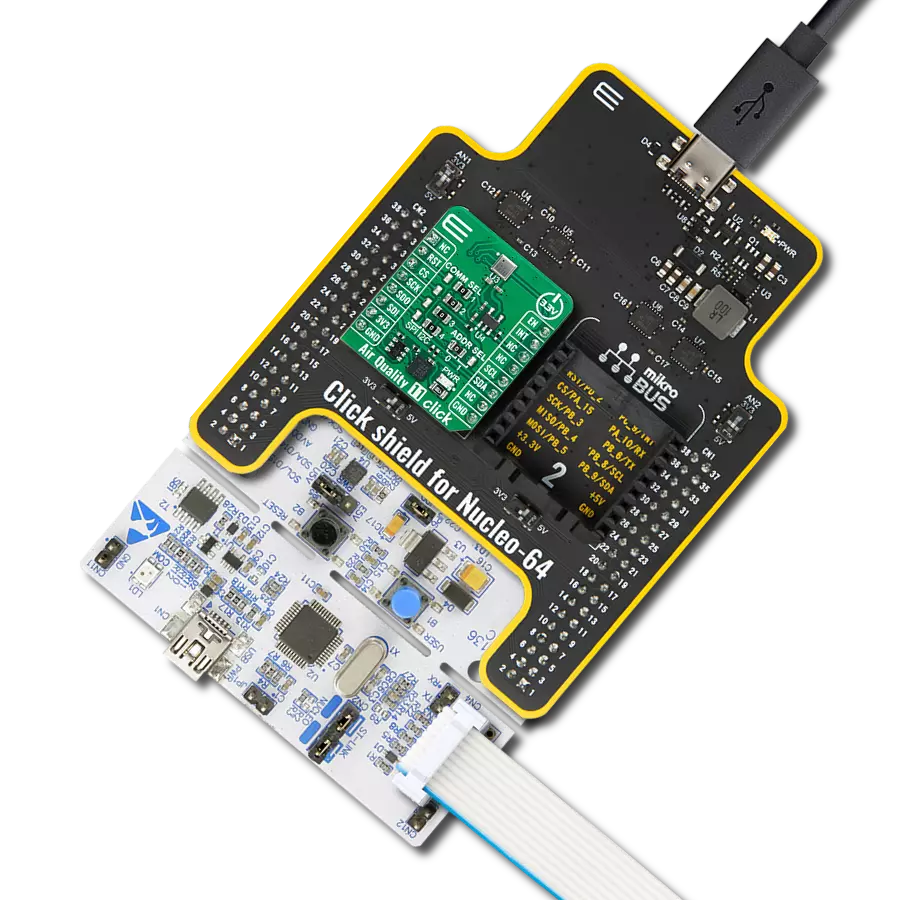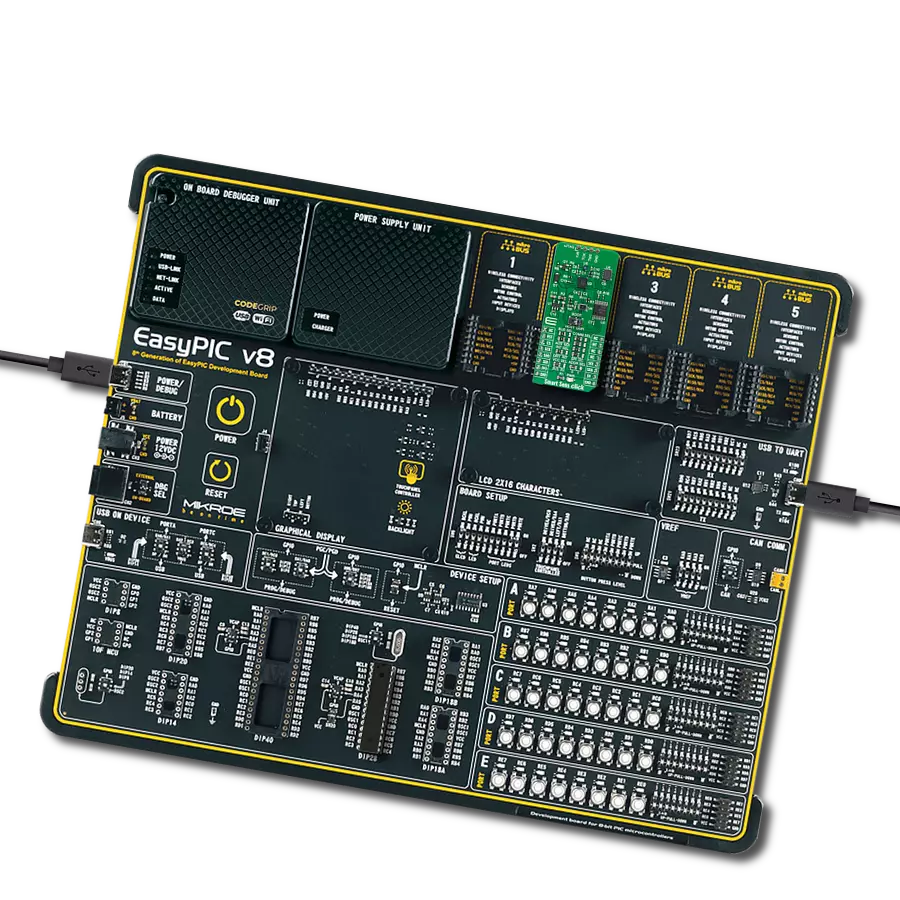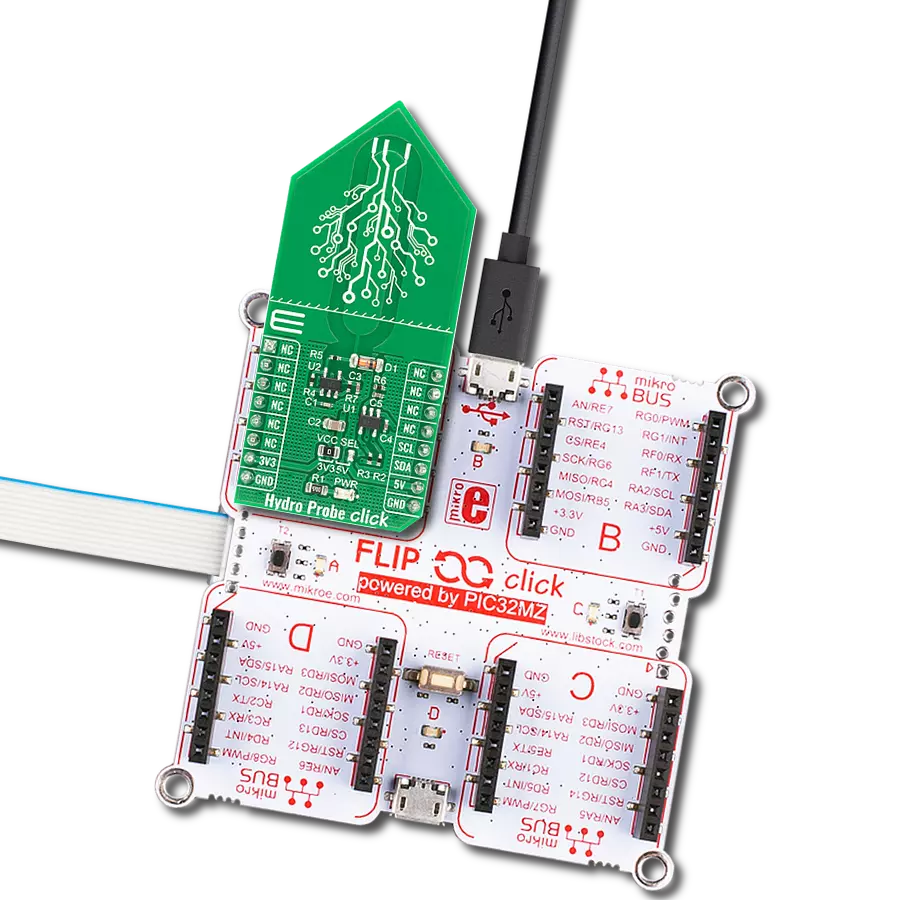Create a healthier living environment by actively monitoring humidity levels and air quality parameters, ensuring the well-being of you and your loved ones
A
A
Hardware Overview
How does it work?
Environment 2 Click is based on the SHT40 and SGP40, a high-accuracy best-in-class SHT relative humidity, and a temperature sensor combined with MOx based gas sensor from Sensirion. The SHT40 offers reduced power consumption, improved accuracy specifications, and a fully calibrated digital I2C Fast Mode Plus interface for the fastest data transfer. It covers extended operating humidity and temperature ranges from 0 to 100%RH and from -40°C to 125°C with accuracies of ±1.8%RH and ±0.2°C. Conversely, an additional gas sensor of this combo solution, the SGP40, provides a humidity-compensated VOC-based indoor air quality signal and a temperature-controlled micro hot plate. The SHT40 performs best when operated within the recommended
average temperature and humidity range of 5-60°C and 20-80%RH. Long-term exposure to conditions outside recommended normal range, especially at high relative humidity, may temporarily offset the RH signal. After returning to the recommended average temperature and humidity range, the sensor will recover to within specifications. The output signal of the SGP40 is processed by Sensirion’s VOC Algorithm, which automatically adapts to the environment the sensor is exposed to translate the raw signal into a VOC Index. The sensing element and VOC Algorithm feature unmatched robustness against contaminating gases in real-world applications, enabling exceptional long-term stability, low drift, high reproducibility, and reliability. Environment 2
Click communicates with MCU using the standard I2C 2-Wire interface. Since both sensors for operation requires a 3.3V logic voltage level only, this Click board™ also features the PCA9306 voltage-level translator from Texas Instruments. The I2C interface bus lines are routed to the dual bidirectional voltage-level translator, allowing this Click board™ to work properly with both 3.3V and 5V MCUs. This Click board™ can operate with either 3.3V or 5V logic voltage levels selected via the VIO SEL jumper. This way, both 3.3V and 5V capable MCUs can use the communication lines properly. Also, this Click board™ comes equipped with a library containing easy-to-use functions and an example code that can be used, as a reference, for further development.
Features overview
Development board
Nucleo-64 with STM32F091RC MCU offers a cost-effective and adaptable platform for developers to explore new ideas and prototype their designs. This board harnesses the versatility of the STM32 microcontroller, enabling users to select the optimal balance of performance and power consumption for their projects. It accommodates the STM32 microcontroller in the LQFP64 package and includes essential components such as a user LED, which doubles as an ARDUINO® signal, alongside user and reset push-buttons, and a 32.768kHz crystal oscillator for precise timing operations. Designed with expansion and flexibility in mind, the Nucleo-64 board features an ARDUINO® Uno V3 expansion connector and ST morpho extension pin
headers, granting complete access to the STM32's I/Os for comprehensive project integration. Power supply options are adaptable, supporting ST-LINK USB VBUS or external power sources, ensuring adaptability in various development environments. The board also has an on-board ST-LINK debugger/programmer with USB re-enumeration capability, simplifying the programming and debugging process. Moreover, the board is designed to simplify advanced development with its external SMPS for efficient Vcore logic supply, support for USB Device full speed or USB SNK/UFP full speed, and built-in cryptographic features, enhancing both the power efficiency and security of projects. Additional connectivity is
provided through dedicated connectors for external SMPS experimentation, a USB connector for the ST-LINK, and a MIPI® debug connector, expanding the possibilities for hardware interfacing and experimentation. Developers will find extensive support through comprehensive free software libraries and examples, courtesy of the STM32Cube MCU Package. This, combined with compatibility with a wide array of Integrated Development Environments (IDEs), including IAR Embedded Workbench®, MDK-ARM, and STM32CubeIDE, ensures a smooth and efficient development experience, allowing users to fully leverage the capabilities of the Nucleo-64 board in their projects.
Microcontroller Overview
MCU Card / MCU
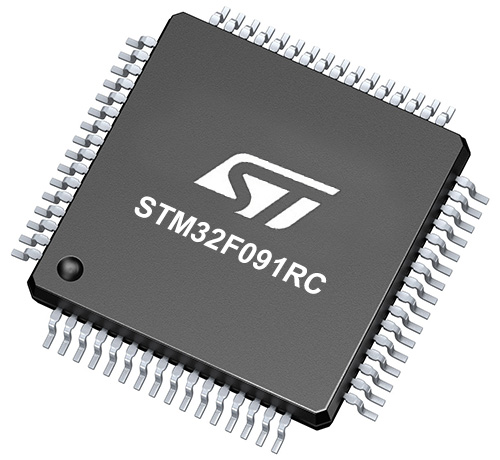
Architecture
ARM Cortex-M0
MCU Memory (KB)
256
Silicon Vendor
STMicroelectronics
Pin count
64
RAM (Bytes)
32768
You complete me!
Accessories
Click Shield for Nucleo-64 comes equipped with two proprietary mikroBUS™ sockets, allowing all the Click board™ devices to be interfaced with the STM32 Nucleo-64 board with no effort. This way, Mikroe allows its users to add any functionality from our ever-growing range of Click boards™, such as WiFi, GSM, GPS, Bluetooth, ZigBee, environmental sensors, LEDs, speech recognition, motor control, movement sensors, and many more. More than 1537 Click boards™, which can be stacked and integrated, are at your disposal. The STM32 Nucleo-64 boards are based on the microcontrollers in 64-pin packages, a 32-bit MCU with an ARM Cortex M4 processor operating at 84MHz, 512Kb Flash, and 96KB SRAM, divided into two regions where the top section represents the ST-Link/V2 debugger and programmer while the bottom section of the board is an actual development board. These boards are controlled and powered conveniently through a USB connection to program and efficiently debug the Nucleo-64 board out of the box, with an additional USB cable connected to the USB mini port on the board. Most of the STM32 microcontroller pins are brought to the IO pins on the left and right edge of the board, which are then connected to two existing mikroBUS™ sockets. This Click Shield also has several switches that perform functions such as selecting the logic levels of analog signals on mikroBUS™ sockets and selecting logic voltage levels of the mikroBUS™ sockets themselves. Besides, the user is offered the possibility of using any Click board™ with the help of existing bidirectional level-shifting voltage translators, regardless of whether the Click board™ operates at a 3.3V or 5V logic voltage level. Once you connect the STM32 Nucleo-64 board with our Click Shield for Nucleo-64, you can access hundreds of Click boards™, working with 3.3V or 5V logic voltage levels.
Used MCU Pins
mikroBUS™ mapper
Take a closer look
Click board™ Schematic

Step by step
Project assembly
Software Support
Library Description
This library contains API for Environment 2 Click driver.
Key functions:
environment2_get_temp_hum- Environment 2 get temperature and relative humidity functionenvironment2_get_air_quality- Environment 2 get air quality data functionenvironment2_sgp40_measure_test- Environment 2 SGP40 measurement test function
Open Source
Code example
The complete application code and a ready-to-use project are available through the NECTO Studio Package Manager for direct installation in the NECTO Studio. The application code can also be found on the MIKROE GitHub account.
/*!
* @file main.c
* @brief Environment2 Click example
*
* # Description
* This library contains API for Environment 2 Click driver.
* The library contains drivers for measuring air quality,
* temperature and relative humidity.
*
* The demo application is composed of two sections :
*
* ## Application Init
* Initializes I2C driver and triggers the built-in self-test checking,
* set heater off, performs sensors configuration and initialize VOC algorithm.
*
* ## Application Task
* This is an example that demonstrates the use of the Environment 2 Click board.
* Measured and display air quality ( raw data ),
* temperature ( degrees Celsius ), relative humidity ( % ) and VOC Index.
* Results are being sent to the Usart Terminal where you can track their changes.
* All data logs write on USB UART changes every 2 sec.
*
* @author Nenad Filipovic
*
*/
#include "board.h"
#include "log.h"
#include "environment2.h"
static environment2_t environment2;
static log_t logger;
static uint16_t air_quality;
static float humidity;
static float temperature;
static int32_t voc_index;
static environment2_voc_algorithm_params voc_algorithm_params;
void application_init ( void ) {
log_cfg_t log_cfg; /**< Logger config object. */
environment2_cfg_t environment2_cfg; /**< Click config object. */
/**
* Logger initialization.
* Default baud rate: 115200
* Default log level: LOG_LEVEL_DEBUG
* @note If USB_UART_RX and USB_UART_TX
* are defined as HAL_PIN_NC, you will
* need to define them manually for log to work.
* See @b LOG_MAP_USB_UART macro definition for detailed explanation.
*/
LOG_MAP_USB_UART( log_cfg );
log_init( &logger, &log_cfg );
log_info( &logger, " Application Init " );
// Click initialization.
environment2_cfg_setup( &environment2_cfg );
ENVIRONMENT2_MAP_MIKROBUS( environment2_cfg, MIKROBUS_1 );
err_t init_flag = environment2_init( &environment2, &environment2_cfg );
if ( init_flag == I2C_MASTER_ERROR ) {
log_error( &logger, " Application Init Error. " );
log_printf( &logger, " Please, run program again... " );
for ( ; ; );
}
log_printf( &logger, " Application Task \r\n" );
log_printf( &logger, "-----------------------\r\n" );
log_printf( &logger, " Environment 2 Click \r\n" );
log_printf( &logger, "-----------------------\r\n" );
if ( environment2_sgp40_measure_test( &environment2 ) == ENVIRONMENT2_SGP40_TEST_PASSED ) {
log_printf( &logger, " All tests passed\r\n" );
log_printf( &logger, " Successfully\r\n" );
} else {
log_printf( &logger, " One or more tests have\r\n" );
log_printf( &logger, " Failed\r\n" );
}
log_printf( &logger, "-----------------------\r\n" );
Delay_ms ( 100 );
environment2_sgp40_heater_off( &environment2 );
Delay_ms ( 100 );
environment2_config_sensors( );
Delay_ms ( 100 );
}
void application_task ( void ) {
environment2_get_temp_hum( &environment2, &humidity, &temperature );
Delay_ms ( 100 );
log_printf( &logger, " Humidity : %.2f %% \r\n", humidity );
log_printf( &logger, " Temperature : %.2f C \r\n", temperature );
environment2_get_air_quality( &environment2, &air_quality );
Delay_ms ( 100 );
log_printf( &logger, " Air Quality : %d \r\n", air_quality );
log_printf( &logger, "- - - - - - - - - - - \r\n" );
environment2_get_voc_index( &environment2, &voc_index );
Delay_ms ( 100 );
log_printf( &logger, " VOC Index : %d \r\n", ( uint16_t ) voc_index );
log_printf( &logger, "-----------------------\r\n" );
Delay_ms ( 1000 );
Delay_ms ( 1000 );
}
int main ( void )
{
/* Do not remove this line or clock might not be set correctly. */
#ifdef PREINIT_SUPPORTED
preinit();
#endif
application_init( );
for ( ; ; )
{
application_task( );
}
return 0;
}
// ------------------------------------------------------------------------ END
Additional Support
Resources
Category:Environmental



















